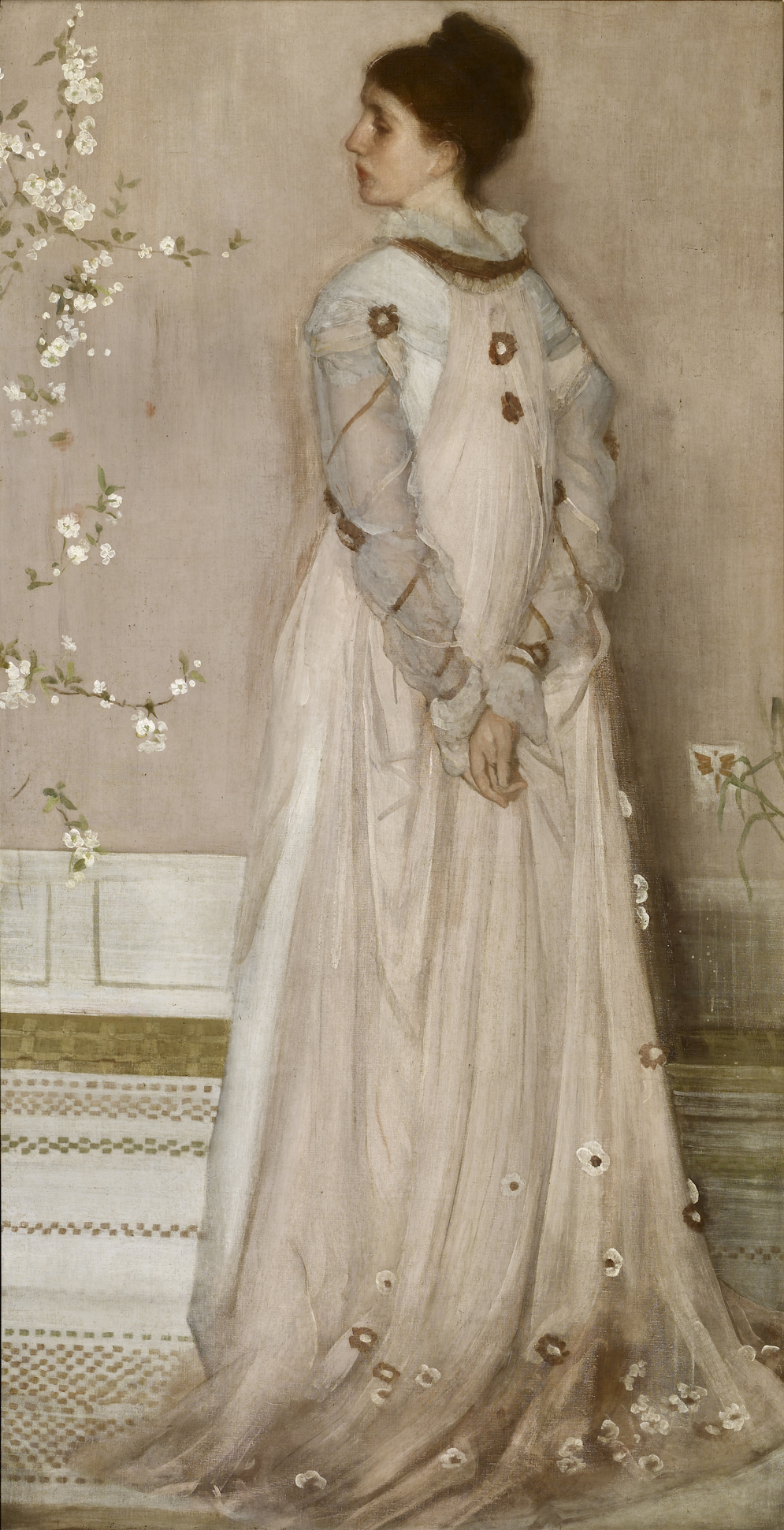Dear users, just to let you know - the Chinese version of DailyArt is live! Just update the app if you want to use it!
We feature today's piece thanks to The Frick Collection in New York. :) I'm so happy about this; Whistler is one of my favorite painters! :)
In 1855, Frances Dawson (1834–1910) married Frederick R. Leyland, a major Liverpool shipowner, telephone magnate, and art collector, who was one of Whistler’s chief patrons before the two quarreled bitterly over the decoration of the famous Peacock Room, once the dining room of the Leylands’ London townhouse and now in the Freer Gallery of Art in Washington.
Commissioned in the fall of 1871, this portrait was exhibited at Whistler’s first one-man exhibition in 1874 (an event sponsored by Leyland), but was never considered by the artist to be totally finished. Within its predominantly pink color scheme, intended to set off Mrs. Leyland’s red hair, the subject is depicted wearing a multi-layered gown designed by the artist. The abstract, basketweave patterns of the matting at the base are repeated on the frame, also designed by the artist; they offset the naturalistic flowering almond branches at the left, which suggest Whistler’s deep interest in Japanese art at this time. Like the portrait of Montesquiou, that of Mrs. Leyland is signed at mid-right with Whistler’s emblematic butterfly, a pattern based on his initials JMW and imbued with the formalistic preoccupations of the 19th-century aesthetic movement. The portrait is in fact so totally a work of exquisite design that Whistler’s contemporary Dante Gabriel Rossetti wrote of it, with some reason: “I cannot see that it is at all a likeness.”
P.S. The Whistler's Portrait of Artist’s Mother is one of the most famous works by an American artist outside the United States. Read about it here.


 James Abbott McNeill Whistler
James Abbott McNeill Whistler